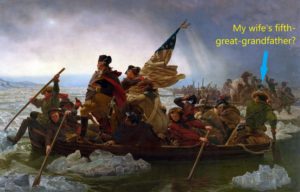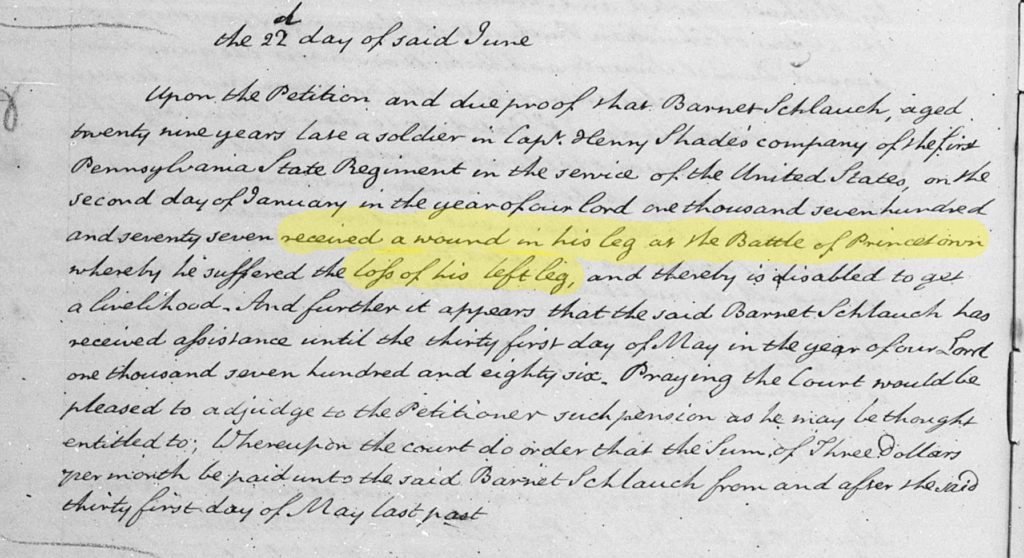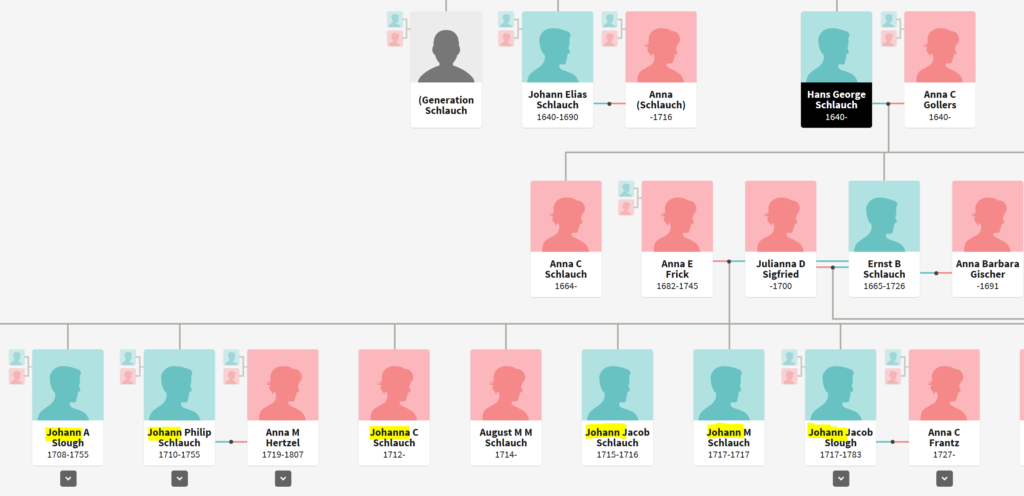Proving a lineage to my satisfaction is one thing, but I’ve run into numerous situations where I had trouble convincing others I was right. For one particular lineage, serious researchers, including myself, had been led astray so many times because there were so many men with the same name in the same region, it was hard to feel confident of any new theory.
I proved that lineage to my satisfaction, but I couldn’t convince anyone else to sign on. It didn’t help that the lineage I found had such a compelling tie to America’s national founding story.

The lineage included a Pennsylvania German whose unit in the Revolution had crossed the Delaware with George Washington on Christmas Day of 1776. There’s no way to tell whether he was one of the 1/3rd of troops that were sick and stayed behind, but I know he was with Washington a week or so later in the lead-up to the Battle of Princeton. He lost his left leg during that seminal moment in the Revolution, a fact which was recorded in his application for a pension years later.

That story, though, gave me a potential neutral arbiter: the Daughters of the American Revolution. In this video, I’ll share my experience with getting my wife into the DAR.
The first thing you need to consider is the application form. It is long, and it can be tedious to fill out. And while you may be thinking about how to prove relationships between your long-deceased ancestors, the DAR makes you start by proving your immediate lineage, starting with your parents.
And you may not have those documents: I mean, why would you need your parents’ birth certificates and marriage license for your research? You know who they are. But the DAR doesn’t know who your parents and grandparents are, so you’ll need to prove every step.
You also have to rely on primary source documents. The DAR won’t even consider trees on ancestry.com as evidence. If you do need to rely on a published genealogy, it had better be a secondary source, loaded with citations.
You’ll need to provide the DAR copies of all documents from your lineage that aren’t easily available. Basically,you’ll need copies of everything except for census records.
Which documents you need vary by period. For people born after 1900, you’ll need birth, marriage & death certificates for each one. In contrast, pre-1850, you’ll need parish records and probate documents that explicitly state relationships. You can make logical arguments when you lack an explicitly stated relationship but expect those to face a lot of scrutiny. You’ll want multiple pieces of supporting evidence.
While this may be a bit tedious, it’s actually a fantastic exercise because it forces you to go back and validate each step of your lineage. You might even notice something you’d overlooked that will help break through other brick walls.
Once you’ve got all this together, you’ll end up with two reviewers. First is the genealogy lead for your local DAR chapter. Her job is to make sure your application is up-to-snuff, and she will almost certainly come back to you with questions and clarifications. In my case, she not only double-checked my affirmative lineage, but she double-checked some of the different men with the same name living in the same region that I had ruled out—she wanted to understand the whole story.
Once she felt confident in the lineage, she mailed it into DAR HQ in D.C. where a second and final reviewer would approve or reject the application. This step took a couple of months, but that was it, my wife was in.
As to the other serious researchers… getting that independent verification was enough to make them believe in the new lineage.





 I completed a Board & Batten wainscoting project in my daughter’s room this weekend. Well, almost completed: I have some touch-up sanding/painting to do, but that’s only an hour or three of work.
I completed a Board & Batten wainscoting project in my daughter’s room this weekend. Well, almost completed: I have some touch-up sanding/painting to do, but that’s only an hour or three of work.